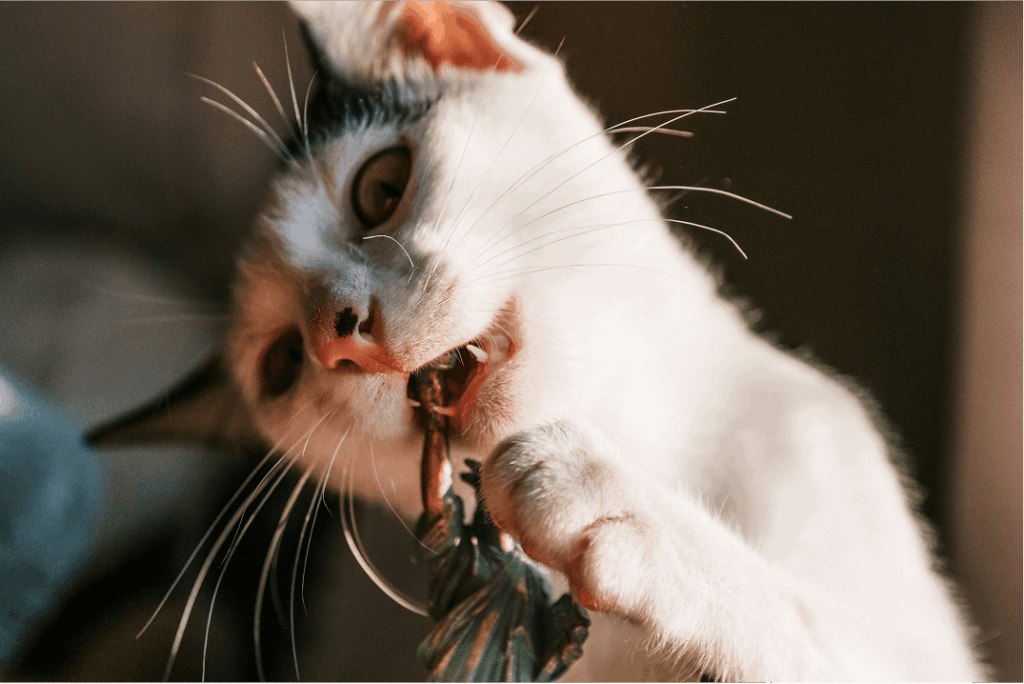Pica in Cats: Common Causes, Risks & How to Help
Have you noticed your cat chewing on plants, wool, or even electrical cords? This behavior might be more than curiosity—it could be feline pica.
Pica is the medical term for the behavior of eating substances that aren’t intended to be food. Humans can have pica – it’s especially common among pregnant women—but so can animals like cats and dogs.
Feline pica is actually one of the most common reasons cat owners go to the vet.
What Is Feline Pica?
The urge to eat non-food items in cats can be strong. It’s no secret that cats generally do what they want! If a cat has pica, it’s probably been practicing the behavior for some time. For cats, pica can serve a variety of purposes: to soothe, to entertain, or even to attempt to satisfy some dietary craving.
Cats with pica may chew on or swallow:
- Plants or grass
- Wool, yarn, or fabric
- Plastic or rubber
- Electrical cords
- Paper or cardboard
The urge is often strong and may continue for years if not addressed. It is a little more common in younger cats, but it can occur in cats of any age. Some experts say that certain breeds of cats, particularly Oriental and Siamese cats, are predisposed to pica.

Symptoms of Feline Pica
The most obvious sign of pica is catching your cat in the act. If you don’t spend 24 hours a day with your cat, this can be difficult. Since pica can cause ill effects, a few symptoms that might be an indication of the condition include:
- Vomiting or gagging
- Constipation or diarrhea
- Decreased appetite
- Lethargy or weakness
- Evidence of chewed or missing household items
Causes of Feline Pica
Why does your cat do this if it’s bad for his health? Feline pica is still a bit of a mystery, even to vets, and its root cause varies from cat to cat. A few of the most commonly hypothesized reasons cats get pica include:
- Behavioral Disorder
Pica is a learned behavior that cats do out of boredom, stress, or to satisfy a primal urge (such as to relive the sensation of nursing as a kitten). Abrupt behavioral changes can signal deeper issues—here are 4 cat behaviors you should never ignore.
- Dietary Needs
Pica occurs in cats whose dietary needs aren’t being met, resulting in hunger, mineral deficiency, vitamin deficiency, or a lack of fiber.
- Feline Disease
Pica is a symptom of an underlying disease such as FIV, hyperthyroidism, anemia, feline leukemia, dental disease, diabetes, and others.
How to Treat Feline Pica
Do you suspect your cat has pica? If you’re very concerned or if your cat’s health seems to be affected, call a vet immediately. Your cat’s doctor can perform a variety of tests to determine whether a physical condition could be to blame.
There are a few things to try if you want to treat your cat’s pica yourself.
First, remove any objects he might want to chew on, including cords, rugs, or blankets. If your cat tends to target greenery, check out our guide on how to stop cats from eating houseplants.
Instead, provide him with some objects that are safe to chew on, such as indestructible toys.
Be sure to give your cat at least 30 minutes of play a day to keep him happy, not bored.
Lastly, talk to your vet about whether or not your cat’s diet may be lacking. Switching out his food may be an easy solution to the persistent problem of pica!
Advancing Cat Health Through Science
Gallant is conducting clinical trials in regenerative medicine to explore how stem cell therapies could shape the future of feline care.


